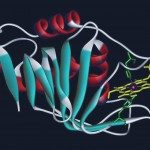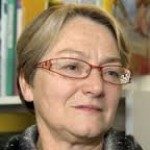Link to Pubmed [PMID] – 2627301
J. Biomol. Struct. Dyn. 1989 Dec;7(3):607-21
The structure of the complex formed between ditercalinium, 2,2′-[4,4′-bipiperidine-1,1′-bis-(ethane-1,2-diyl)]bis(10-me thoxy-7H- pyrido[4,3-c]carbazolium) tetramethane sulfonate (NSC 366241), and the self-complementary tetranucleotide duplex d(CpGpCpG)2 has been investigated by means of a novel theoretical approach for modelling the conformational flexibility of nucleic acids. The methodology used is the JUMNA procedure, a molecular mechanics systematics capable of evaluating the internal energy and the interaction energy of a complex formed from a large number of fragments. In the best energy-minimized structures, the piperidinium chains of ditercalinium are located in the major groove of the right-handed oligonucleotide. Calculations show a distortion of the base-paired d(CpGpCpG)2 minihelix consisting of lateral dislocation of one base pair with respect to another along an axis parallel to the long axis; strong propeller twist and tilt of the end base pairs; a collective motion of all base pairs with respect to the helical axis towards the drug; and an overwinding at the exclusion site. The proposed structure of the complex is in good agreement with reported proton NMR data, supporting the feasibility of such model.

